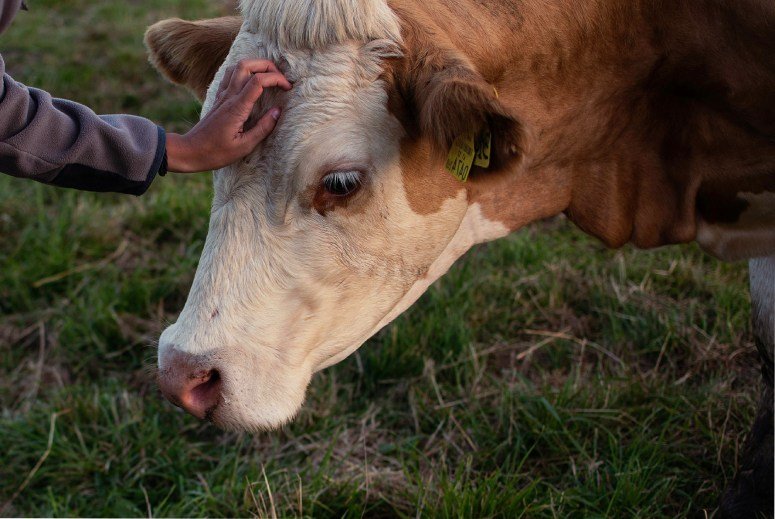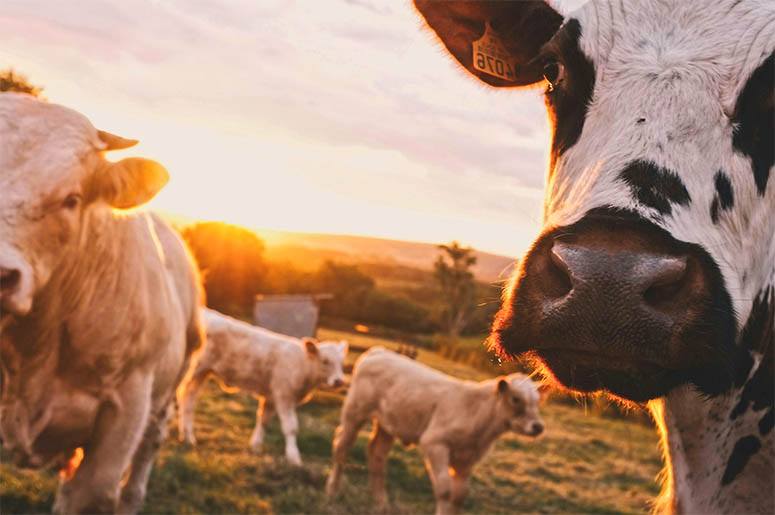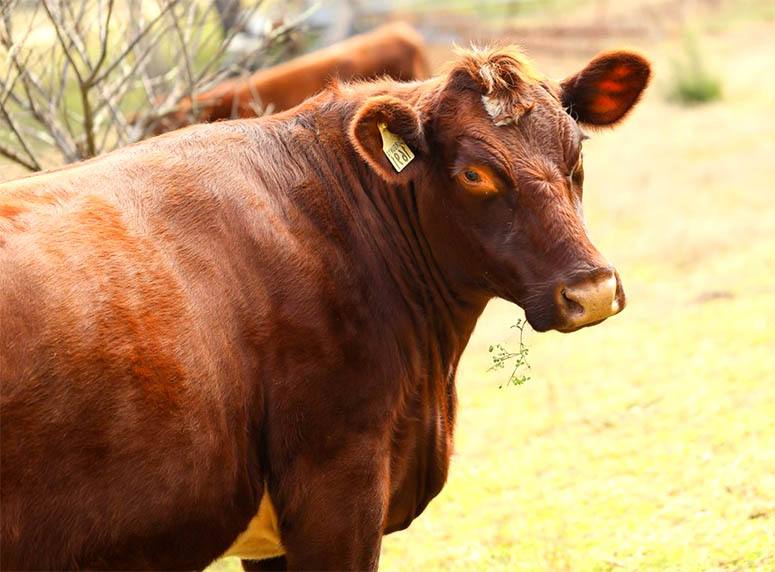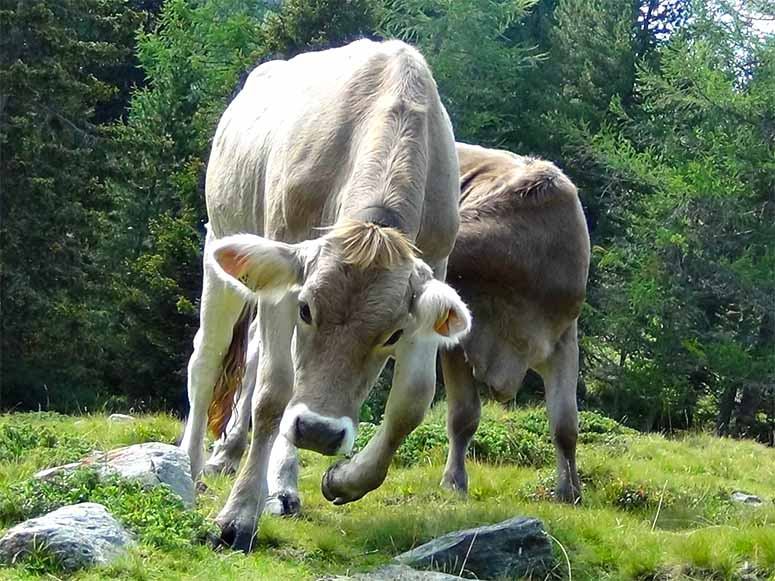Contents
What are the odds of being attacked and killed by a cow? Cow attacks may not be the first consideration when reflecting on animal encounters, yet they can be surprisingly common and, in some instances, fatal.
This article aims to explore the statistics related to cow attacks, including annual occurrences, fatality rates, and the countries most significantly affected.
It will also examine the underlying reasons for such behavior, ranging from provocation to the instinct to protect their young.
Furthermore, this discussion will provide valuable strategies for preventing attacks and guidance on appropriate actions to take should one find themselves in a dangerous situation.
A comprehensive understanding of these aspects can contribute to the safety of both individuals and cattle.
Statistics on cow attacks
Statistics on cow attacks are essential for comprehending the risks associated with human-cow interactions, especially in rural areas where livestock is prevalent.
Despite the general perception that cows are docile animals, substantial annual reports indicate that fatalities and injuries related to cow interactions occur more frequently than is commonly assumed.
A thorough analysis of these statistics can provide valuable insights for farmers and the general public, enabling them to understand the likelihood of such incidents and the underlying risk factors that contribute to them.
This understanding is crucial for the establishment of effective safety measures and emergency response protocols.
How many cow attacks occur each year?

Each year, a notable number of incidents involving cow attacks are reported, particularly in rural communities where agricultural practices may expose individuals to potential risks associated with livestock.
Statistics reveal that there are approximately 20,000 reported incidents annually in the United States, with injuries varying from minor bruises to severe lacerations and fractures.
The demographics most commonly affected include farmers, agricultural workers, and unwitting visitors to rural farms.
Several factors can influence the likelihood of these attacks. For example, the temperament of specific breeds, environmental stressors, and inadequate herd management practices can all contribute to the risk.
Farmers who implement effective handling techniques and ensure ample space for cattle typically reduce the likelihood of such dangerous encounters.
What percentage of cow attacks are fatal?
While cow attacks are often regarded as non-life-threatening, a concerning percentage of such incidents result in fatalities, underscoring the importance of understanding the associated risks.
Statistics indicate that approximately 20 individuals lose their lives each year due to cow-related incidents. While this figure may appear modest in comparison to the nearly 30 fatalities attributed to dog attacks annually, it nonetheless represents a significant concern.
Many individuals may not view cows as dangerous – however, the potential for severe aggression becomes apparent when considering that these animals, particularly when protecting their calves, can exhibit unpredictable behavior.
This situation highlights the necessity for enhanced awareness and education regarding safe interactions with cattle.
It is essential for livestock handlers, farmers, and the general public to adopt precautionary measures when in the presence of these large animals.
What countries have the highest rates of cow attacks?
Certain countries have been identified as having notably higher rates of cow attacks, often correlated with the density of livestock farming and the interactions between rural populations and livestock.
For example, regions in India and the United States frequently report such incidents, with statistics indicating that thousands of injuries occur annually.
Cultural factors, including the reverence of cows in certain societies juxtaposed with their role as a source of livelihood, can heighten tensions between humans and livestock.
Inadequate livestock management practices, such as insufficient fencing and poor animal training, further exacerbate the risk of attacks.
Implementing agricultural policies that promote improved animal husbandry techniques, along with community education on safety, can play a crucial role in mitigating these threats and fostering a safer coexistence between cattle and the surrounding populace.
What causes cows to attack?

Understanding the causes of cow attacks is crucial for both animal welfare and public safety, as multiple factors contribute to aggressive behavior in cows, particularly in agricultural and animal husbandry contexts.
While cows are typically regarded as gentle animals, they may display aggression under specific circumstances, such as perceived threats to their calves or territory.
Additionally, factors such as stress, herd dynamics, and biological predispositions significantly influence the likelihood of these aggressive incidents.
Provocation
Provocation is a critical factor in understanding the potential for aggression in cows, as certain human actions can elicit defensive responses from these animals.
Even actions that may appear innocuous, such as sudden movements or loud noises, can startle cows and create a sense of threat.
When an individual encroaches on a cow’s personal space, the animal may instinctively react to protect itself or its offspring, often misinterpreting the human’s actions as a potential threat rather than a product of curiosity.
Recognizing specific behavioral patterns in cows, such as ear positioning and tail movements, can significantly aid individuals in preventing potential conflicts.
By understanding cow body language and temperament, one can create a safer environment that respects the inherent nature of these animals, thereby minimizing the risk of unexpected aggression.
Protecting calves
Cows exhibit instinctive protective behaviors toward their calves, which can result in aggressive reactions when they perceive a threat.
It is crucial for farmers and livestock handlers to understand that a mother cow, sensing potential danger to her calf, may engage in defensive behaviors that could escalate into confrontations.
This aggression is particularly likely to occur during routine handling, especially in confined spaces where the cow may feel cornered or overly protective.
Adopting proper animal husbandry practices is essential, including maintaining a safe distance during assessments and providing sufficient space to allow the cow’s natural maternal instincts to subside.
Additionally, implementing integrated farm management strategies that prioritize low-stress handling methods can help mitigate these aggressive encounters, thereby ensuring the safety of both humans and animals on the farm.
Protecting territory
Territorial behavior in cows is a significant factor contributing to aggressive encounters, as these animals may perceive humans as intruders within their space, resulting in defensive actions.
This instinctive reaction is particularly pronounced during critical periods, such as when cows are accompanied by their calves or during feeding. In these situations, the animals may exhibit increased protectiveness, viewing nearby humans as potential threats.
It is vital for individuals who interact with cattle in rural environments to comprehend these circumstances.
Implementing preventive strategies, such as maintaining a safe distance, utilizing secure fencing, and approaching cows in a calm manner while making their presence known, can considerably diminish the risk of aggression.
By being attentive to the cows’ behavior and recognizing signs of stress or agitation, humans can engage more safely with these animals and promote a harmonious coexistence.
Preventing cow attacks
Preventing cow attacks requires a comprehensive strategy that encompasses an understanding of cattle behavior, the implementation of safety measures on farms, and the promotion of public awareness regarding the potential risks associated with human-cow interactions.
Understanding cattle behavior
A comprehensive understanding of cattle behavior is vital for mitigating the risks associated with cow attacks, as the ability to recognize signs of stress or aggression can facilitate safer interactions.
By closely observing their body language and vocalizations, individuals who work with cattle can identify critical indicators of distress, such as elevated heads, bared teeth, or rapid tail swishing.
Familiarity with these behavioral patterns enables farmers to implement proactive strategies, ensuring that the herd remains calm and manageable.
Furthermore, knowledge derived from animal behavior research can inform the development of clear safety protocols that emphasize the importance of maintaining a safe distance during critical situations.
Through education and careful observation, those engaged in farming and rural activities can cultivate a safer environment, thereby reducing the likelihood of unintended confrontations with these powerful animals.
Taking precautions on farms and ranches
Implementing effective safety measures on farms and ranches is essential for preventing cow attacks and ensuring the well-being of both farm workers and livestock.
To achieve this, farmers may adopt a variety of precautionary techniques tailored to their specific operations.
For instance, employing proper herd management techniques, such as maintaining a stress-free environment and recognizing individual animal behaviors, can significantly reduce the likelihood of aggressive encounters.
Furthermore, comprehensive training programs for livestock handlers are imperative – these programs should emphasize safe handling procedures and the identification of warning signs of distress in animals.
The adoption of stringent safety protocols, which include wearing appropriate protective gear and establishing clear emergency response plans, can further mitigate the risk of cow-related injuries.
A proactive approach to farm safety not only protects personnel but also fosters a healthier and more productive livestock environment.
Being aware of surroundings in public areas
In public areas where cattle may roam, it is imperative to maintain awareness of one’s surroundings to prevent potentially dangerous encounters with cows.
This vigilance encompasses not only an awareness of the immediate physical environment but also an understanding of the behavioral patterns and body language exhibited by these animals.
For example, individuals should exercise caution in urban settings where livestock may appear unexpectedly, as well as in rural areas where such encounters are more frequent.
Observing a cow’s posture can provide critical insights – an agitated or alert cow may pose a risk. To enhance safety, community organizations provide training sessions that focus on proper interaction with livestock.
These sessions educate individuals on how to navigate these situations calmly and avoid startling the animals, thereby ensuring the safety of both the public and the cattle.
What to do if you are attacked by a cow

In the unfortunate event of being confronted by an aggressive cow, it is essential to understand the appropriate steps to take in order to improve your chances of escape and minimize the risk of injury.
Try to escape
The primary objective during a cow attack should always be to escape the situation safely and swiftly.
This can typically be accomplished by remaining calm and evaluating the surrounding environment for potential escape routes. If feasible, the individual should gradually move away from the animal, avoiding sudden movements that may provoke it further.
When considering the risks involved, many might wonder, What are the odds of being attacked and killed by a cow? While such incidents are rare, it is crucial to take them seriously and act with caution. Identifying barriers such as fences, walls, or vehicles can offer temporary protection while creating distance from the cow. Positioning oneself sideways to the animal may help in appearing less threatening.
It is essential to remember that panicking can exacerbate the situation – thus, maintaining composure not only facilitates a more strategic escape but also reduces the likelihood of further provocation from the startled animal.
Use deterrents
Utilizing deterrents can serve as an effective means to dissuade an aggressive cow from continuing its attack, thereby enhancing personal safety. What are the odds of being attacked and killed by a cow? Although fatalities are uncommon, understanding deterrent methods can significantly enhance safety.
A variety of methods may be employed, ranging from the establishment of physical barriers—such as sturdy fences or vehicles used to obstruct the animal’s path—to the use of noise-making devices aimed at startling or distracting the creature.
For instance, loud noises produced by air horns or even clapping can effectively interrupt aggressive behavior and prompt the animal to retreat.
Furthermore, training individuals in the use of effective verbal commands or the application of portable deterrent sprays can significantly improve personal safety in such precarious situations.
Implementing a combination of these deterrents not only prevents the escalation of aggression but also fosters a safer environment for both humans and livestock.
Seek medical attention
Following an incident involving a cow attack, it is imperative to seek medical attention without delay, as injuries sustained may be more severe than initially recognized.
Individuals often underestimate the extent of their injuries, which can range from fractures and bruises to potentially serious internal trauma.
Such injuries may not be immediately apparent, and failure to have them evaluated by a medical professional can lead to complications.
Additionally, the risk of infections stemming from open wounds or exposure to the animal’s saliva underscores the importance of prompt veterinary care.
Emergency services are essential in administering the necessary treatment and ensuring that victims receive appropriate medical care.
Recognizing the risks associated with interactions with cows can enhance awareness of the importance of comprehensive medical evaluations, which are crucial for facilitating long-term recovery.
Check below for our FAQ section on the odds of being attacked and killed by a cow.
Discover the enchanting world of probabilities and rare phenomena. Enhance your curiosity and expand your knowledge by exploring our articles at WhatAreTheOddsOf.NET.



